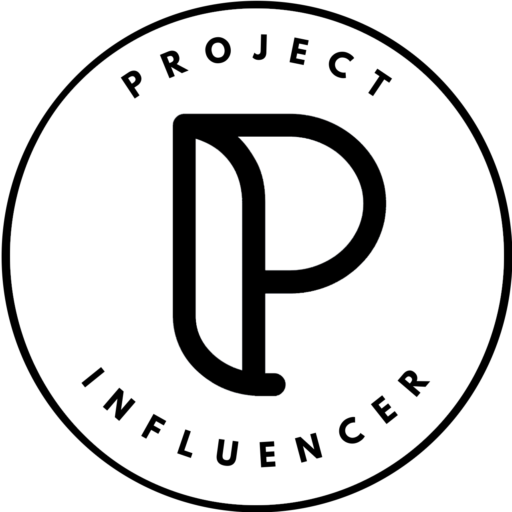Curriculum
- 2 Sections
- 72 Lessons
- Lifetime
- Project Influencer Guide Part 132
- 1.1Introduction
- 1.2Types of Influencers
- 1.4Influencer Toolkit
- 1.5Determine Your Niche
- 1.6Building your brand
- 1.7Get creative with your name
- 1.8Brand Identity
- 1.9Writing and Optimising your Bio
- 1.10Aesthetics: How to create a cohesive aesthetic to build your brand
- 1.11Instagram Presets
- 1.12Creating a social media account
- 1.13How to create a business Instagram account
- 1.14How to add content on Instagram
- 1.15Your first post on Instagram
- 1.16Making the most of Instagram’s other features
- 1.17All about Instagram Stories and Highlights
- 1.18How to switch to a business TikTok account
- 1.19How to add content on TikTok
- 1.20Your first video on TikTok
- 1.21Making the most of TikTok’s other features
- 1.22How to create a business YouTube Account
- 1.23How to add content to YouTube
- 1.24Your first Video on YouTube
- 1.25Making the most of YouTube’s other features
- 1.26Content posting schedule
- 1.27How Often should I post?
- 1.28Weekly Content Calendar: Instagram
- 1.29Weekly Content Calendar: TikTok
- 1.30Weekly Content Calendar: YouTube
- 1.31Helpful Tips
- 1.32Step-By-Step Checklist
- 1.33Next Steps
- Project Influencer Guide Part 240
- 2.1Introduction – Part
- 2.2Elevate Your Instagram Content
- 2.3Elevate Your TikTok Content
- 2.4Elevate Your YouTube Content
- 2.5Diversify Your Social Media Platforms
- 2.6Boost Engagement With Reels and TikToks
- 2.7Staying Updated With Trends
- 2.8Engage Your Audience
- 2.9Perform Audience Research
- 2.10Understanding Analytics
- 2.11Instagram Insights
- 2.12TikTok Analytics
- 2.13YouTube Analytics
- 2.14Monetisation
- 2.15Instagram Monetisation
- 2.16Instagram Sponsored Posts
- 2.17TikTok Monetisation
- 2.18Create a TikTok Shop
- 2.19YouTube Monetisation
- 2.20Brand Collaborations1
- 2.21Beyond Social Media: Why Your Brand Needs a Website II
- 2.22Key Strategies for Identifying Collaborative Brand Opportunities
- 2.23Invitation to Influencer/Creator Events
- 2.24Strategic and Professional Approach: Key Steps for Influencers When Approaching Brands
- 2.25How to Determine Your Rates
- 2.26Influencer Rate Checklist
- 2.27How To Approach Brands
- 2.28Troubleshooting: How To Approach Brands
- 2.29Brand Pitch Email Template Example 1
- 2.30Brand Pitch Email Template Example 2
- 2.31Brand Pitch Email Template Example 3
- 2.32Brand Pitch Email Template Example 4
- 2.33Influencer Media Kit
- 2.34How to Create Your Media Kit (3 Templates Included)
- 2.35Pitch Sent, Now What?
- 2.36Brand Partnership Agreement
- 2.37Extra Resources For Influencers: Must-Have Apps
- 2.3850 Additional Brands To Look Into As An Influencer
- 2.39UK Brand With Affiliate Programs For Influencers/Creators
- 2.40Congratulations!
Determine Your Niche
DETERMINE YOUR NICHE
Here are some examples of popular niches:
Now this will be the most important decision that you make. It is vital that you focus on something that you are really passionate about as the content is then very easy to create. If you’re dreaming of turning your Instagram feed into a modelling portfolio? It all starts with finding your niche and letting your unique personality shine!
What topics or activities excite you the most?
Is there something you could talk about or do every day and never get bored?
A focused niche attracts a targeted audience who share your interests. This means more engaged followers, higher chances of brand collaborations, and ultimately, a stronger foundation for your Instagram modelling career.
The suggestions listed on the right are broad topics, please remember all of these can become more specific. So instead of just ‘Fitness’ you could focus on ‘Quick holiday workouts’.
This decision should be simple but take your time and choose wisely.
- Health/Fitness
- Sports
- Fashion
- Beauty
- Lifestyle
- Travel
- Luxe
- Celebrities & Entertainment
- Food
- Billionaire lifestyle
- Gaming
- Education
- Celebrities & Entertainment
- Animals
- Business/Making
- Money
- Tech (AI)
- Finance (Stocks & Shares)
- Animals
